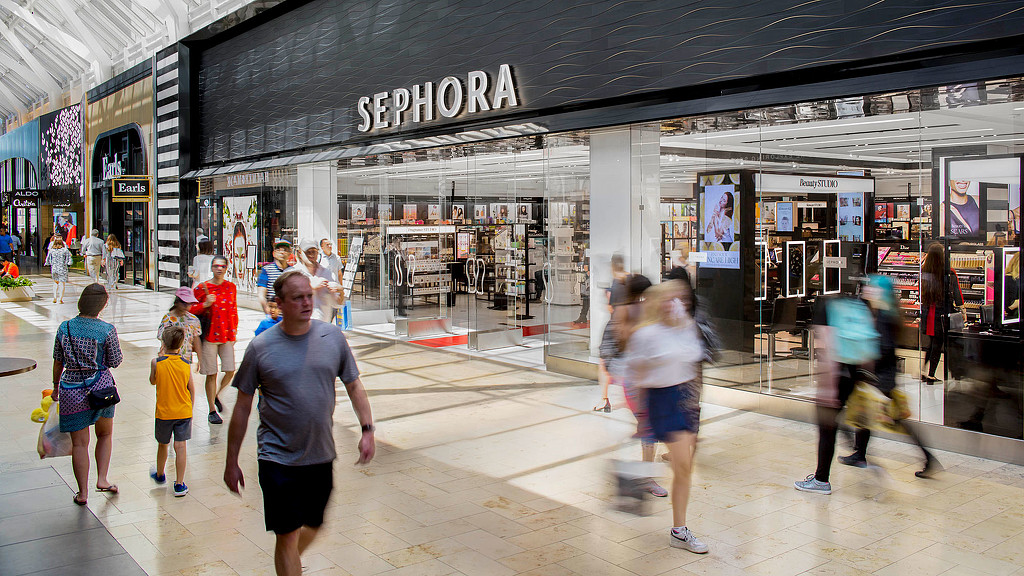Rebuilding Consumer Confidence in Our Shopping Destinations
June 24, 2020 | By David Glover
Editor’s Note: This post is part of our ongoing exploration of how design is responding to the COVID-19 pandemic.
COVID-19 has reshaped our social behavior and impacted our daily lives in ways we never could have anticipated. Shopping districts, high streets, restaurants, and urban entertainment centers around the world have been shuttered for months, and the crisis has forced the industry to pivot in extraordinary ways. We’ve seen retailers and restauranteurs experimenting with everything from reimagined curbside pickup and accelerated contactless payment to virtual showrooms and 3D fashion shows.
As the retail industry gradually reopens, many stores have already begun to implement short-term changes to create a safer shopping experience. But what are the long-term implications that will change how we experience shopping and leisure destinations?
As landlords, developers, and designers think about a future state, we need to think differently. The consequential issues around design and planning today are not related to style; rather, they relate to purpose and performance in light of the human condition and a global desire for unity and connectedness. In this lonelier, more-divided world, developers and landlords are under pressure to create new concepts to restore our sense of closeness and community.
We’ve been working closely with our clients and partners to understand their challenges, questions, and pain points. We’ve also identified some new ideas and formulated potential strategies that can help them rebuild consumer trust and give consumers the confidence they need to return safely to shopping.
Here are five guiding principles to consider for hybrid shopping destinations of the future:
1. Find your purpose of place.More than ever before, today’s consumers are driven by purpose and the belief that what a brand stands for is more important than what they sell. Having a purpose is about the “why” your company or brand exists, beyond selling or turning a profit. According to Accenture, nearly two-thirds (63%) of global consumers prefer to purchase products and services from companies that stand for a purpose that reflects their own values and beliefs. Brands should strive to build communities of brand enthusiasts and give them a prominent voice in the community. To that end, physical spaces play a critical role in fostering community and connection. Branded environments, for example, are a tool that can connect your company’s purpose to place and communicate your core values, beliefs, and mission to customers.
2. Pivot from being a transaction hub to a culture hub.Imagine ice skating under the heroic Christmas tree at Rockefeller Center in New York City; watching the horse race spectacle in Piazza del Campo in Siena, Italy; seeing the Impression West Lake aquatic show in Guangzhou, China; or wandering around Kyoto, Japan, during the Cherry Blossom season. These iconic places have highly defined personas with hyper-sensory experiences that elicit an emotional exchange between the built environment, the event, and the user. They can hold a person’s attention and give customers those visceral moments when they connect with the place in a special way — an experience that transcends ordinary life.
Retail brands that want to engage visitors beyond the traditional shopping experience can start by establishing experiential traditions with a year-round, day-to-night programming of seasonal and signature events. These creative public realm activations will galvanize relationships with customers and the community.
Reshaping the role of the hybrid shopping destination will require a pivot from being the hub of transactions to being the hub of culture. To strengthen customer engagement and build a platform for belonging, we need to create public spaces dedicated to the idea of inclusive prosperity — the idea that the opportunity and benefits of economic growth should be widely shared by all segments of society.
For example, Gensler collaborated with EDENS to design La Cosecha, a contemporary marketplace and gathering hub in D.C.’s Union Market celebrating Latin American arts, culture, and heritage. As part of La Cosecha’s mission-driven concept, all retailers in the market have agreed to donate a portion of their profits to efforts that support Latin American arts and culture in their home countries.
3. Embody local offerings and embrace local culture.To differentiate your offering, it’s essential to be laser focused on your community and have your finger on the pulse of local culture. Give the local community access to the best your city has to offer, and allow people to discover new experiences and emerging brands that they can’t get elsewhere. Conjure an experiential ecosystem with a curated, unexpected, and unique mix of tenants and offerings that feels specifically local. Try to bring people together through new venue typologies in “competitive socializing” — everything from gaming lounges, to venues that offer mini-golf, escape rooms, or even ax throwing.
Partner with local creatives and community leaders to curate the public space happenings so that programming is dialed into your customers’ lifestyle expectations. Prominently showcase local entrepreneurial success stories. Build partnerships with local businesses and educational and cultural institutions with targeted marketing and co-sponsored events.
4. Promote health and well-being.Some shopping destinations have already made great efforts with branded hygiene and wellness programs with services, goods, and event programs. As with the workplace and aviation sectors, we can expect well-being and health to become the standard of a guest visit to meet consumers’ heightened expectations.
We will also see more attention into food, exercise, spirituality, and beauty as a way to model healthier lifestyles and promote well-being. By supporting intangibles like these, property managers can create a higher value for time-strapped guests.
5. Embrace the human side of shopping.While technology has fundamentally disrupted the traditional browse/buy cycle, 65% of U.S. shoppers still want to see and touch the merchandise in person. With all of the hacking of task mode and the ecommerce surge taking place, consider the role of service in a brand engagement. Three quarters (75%) of consumers want there to be more human interaction in the future, not less, according to PwC. One of the biggest differentiators in the future shopping experience will be changes and augmentation to property service professionals. Guest loyalty and success metrics and will be driven by the level and quality of customer service that shoppers receive.
Whether it’s another pandemic or natural disaster, the hybrid shopping destinations of the future that will weather such crises will continue to be places that put communal interactions and emotional connections at the core to enhance the human experience. This is the moment to expand that role and prepare for the future.
For media inquiries, email .

